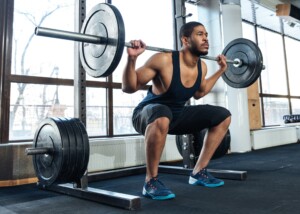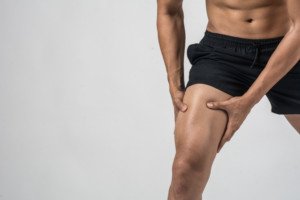
Barbell squats, leg press and the hack squat are favorite weightlifting routines among fitness enthusiasts and bodybuilders.
So as a former certified personal trainer, I decided to pit the barbell squat, leg press and hack squat against each other. Is one the best of the three?
Are they more or less equal?
Is one absolutely inferior to the others?
All three pieces of equipment – barbell squat, leg press and hack squat – can be a regular part of a leg routine, whether it’s strength training or bodybuilding.
But this does not mean that hack squats, barbell squats and leg press should always be in the same weight lifting routine.
I say always leave one on the backburner, to use when it’s time to re-shock your body into adaptation.
Choose two of the three for your weight lifting sessions. Also realize that barbell squat could mean free barbells or Smith machines.
Sometimes the free barbell squat is done with smaller lifting bars (the kind you can curl).
The hack squat this article refers to is the machine, not the free barbell version.
The leg press here is the floor equipment, which I consider more effective than the upright leg press, though the upright version has its virtues.
The best two out of the three are the leg press and barbell squat – though there are hardcore hack machine users who swear that the hack machine is the best.
Advantage of Leg Press
This apparatus pretty much leaves the lower back out of the picture; whereas in barbell squats, the lower back is stressed significantly.
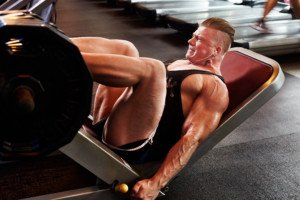
Shutterstock/Free around
Because the legs are more isolated in the leg press, and your upper body is supported by the machine, you can work with much more weight than you could with barbell squats.
(People who can perform ultra-heavy barbell squats, can often do complete leg presses with up to seven, 45-pound plates on each side.)
There is far less risk for injury during leg presses, since your entire upper body is stabilized against the equipment’s back platform.
This enables you to do all sorts of interesting variations without worrying about slipping or injury: altering foot position and distance between legs, focusing on negative training, deep-knee training, etc.
Plus, if you can’t push the weights back up, you can always use your hands to push on your legs.
Disadvantage of Leg Press
Leg pressing really has no disadvantages. Just because leg pressing doesn’t work the entire body, like the squat, doesn’t mean it’s a flawed routine.
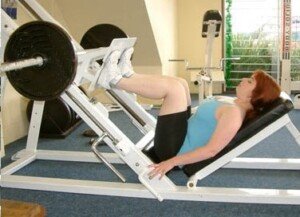
George Stepanek, CreativeCommons
The only “disadvantage” I can think of is that people with very stiff lower backs should avoid deep leg presses on declined leg press equipment until they gain some limberness in their lower back.
Advantage of Barbell Squat
Works many major muscle groups at once, including the core.
A strenuous set of 20 reps, in which the upward motion is more of a thrust, can drive heart rate up to 90 percent target heart rate — you can combine a short cardio interval with an intense resistance set. And 6-10-rep maxes have been known to build huge quads.
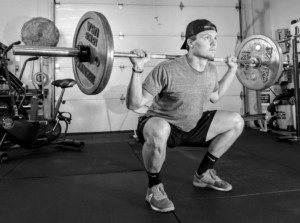
The barbell squat, whether done with a free barbell or Smith machine, strengthens the lower back, quads, glutes and even hamstrings. It improves body stability and balance.
Disadvantage of Barbell Squat
Requires tremendous attention to form. There is a relatively high risk of injury to the lower back and shoulders, especially if the barbell is free rather than the Smith machine. Some people never quite master good form.
A very deep knee bend can be stressful on knee joints for some people.
Because the lower back absorbs some of the weight, it’s hard for some individuals to reach a point where they can really challenge their leg power without their lower back giving out first.
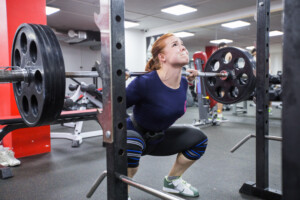
Shutterstock/YanLev
Often, a 6-10-rep max is determined by the lower back maxing out long before the legs do.
If you have shoulder problems, barbell squats will be a hassle, since you must maintain a stretched, tensioned use of their shoulders to support the barbell.
In free barbell squats, it can be a drudgery to re-set a very heavy barbell back on its rack.
Advantage of the Hack Squat
Because these are so different from a leg press, they invite shock to the body and can accelerate results or bump you past a plateau. They target the quads more than the leg press.
Risk of low back strain is much less likely than in barbell squats, but it’s still present.
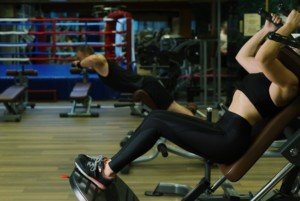
Shutterstock/mountaira
Disadvantage of the Hack Squat
These are just plain uncomfortable.
The position is unnatural, because you are tilted back while squatting. In real life, a squat is done vertically.
Also, most of these machines require you to slip your neck in between a narrow space, and shoulder pads fit on top of your shoulders; so your head and neck are very crammed in.
The problem is when your legs are so strong, you need a lot of weight, but then you can feel all that weight bearing down on your shoulders as you push up. Your shoulders may end up hurting more than your legs.
People with stiff lower backs may feel back discomfort at heavier weights.
On some hack machines, if you can’t get back up, you’re in deep trouble because your hands are not in a convenient position to lock in the platform.
Conclusions
If you absolutely abhor only one of these exercises, then it’s best to limit your involvement to several sets per month.
Otherwise, if you force yourself to perform the activity on a regular basis, you’ll likely output much less than 100 percent effort, when instead, you could be performing at 100 percent effort with a more desirable routine.
If you despise all three — barbell squat, hack squat and leg press — you’re on the wrong track.
You must make yourself look forward to at least two of them, so that every time you perform the routines, you can put passion into your efforts.
 Lorra Garrick is a former personal trainer certified through the American Council on Exercise. At Bally Total Fitness she trained women and men of all ages for fat loss, muscle building, fitness and improved health.
Lorra Garrick is a former personal trainer certified through the American Council on Exercise. At Bally Total Fitness she trained women and men of all ages for fat loss, muscle building, fitness and improved health.
.


